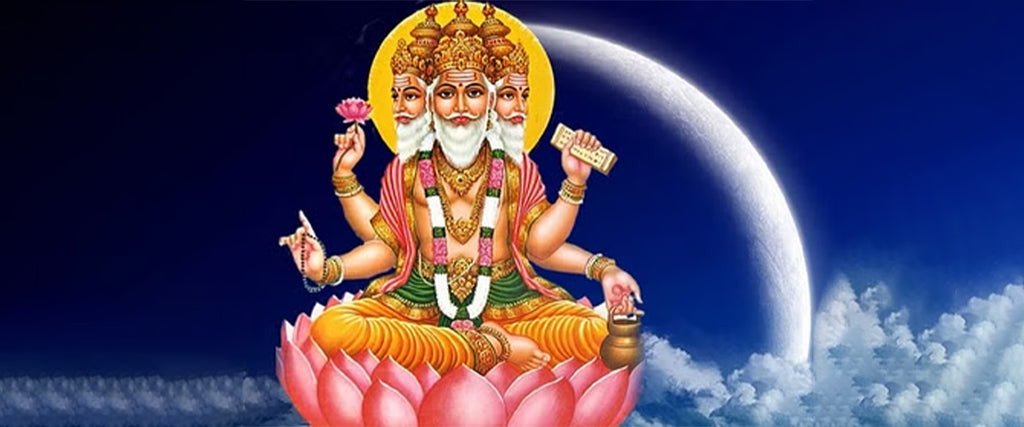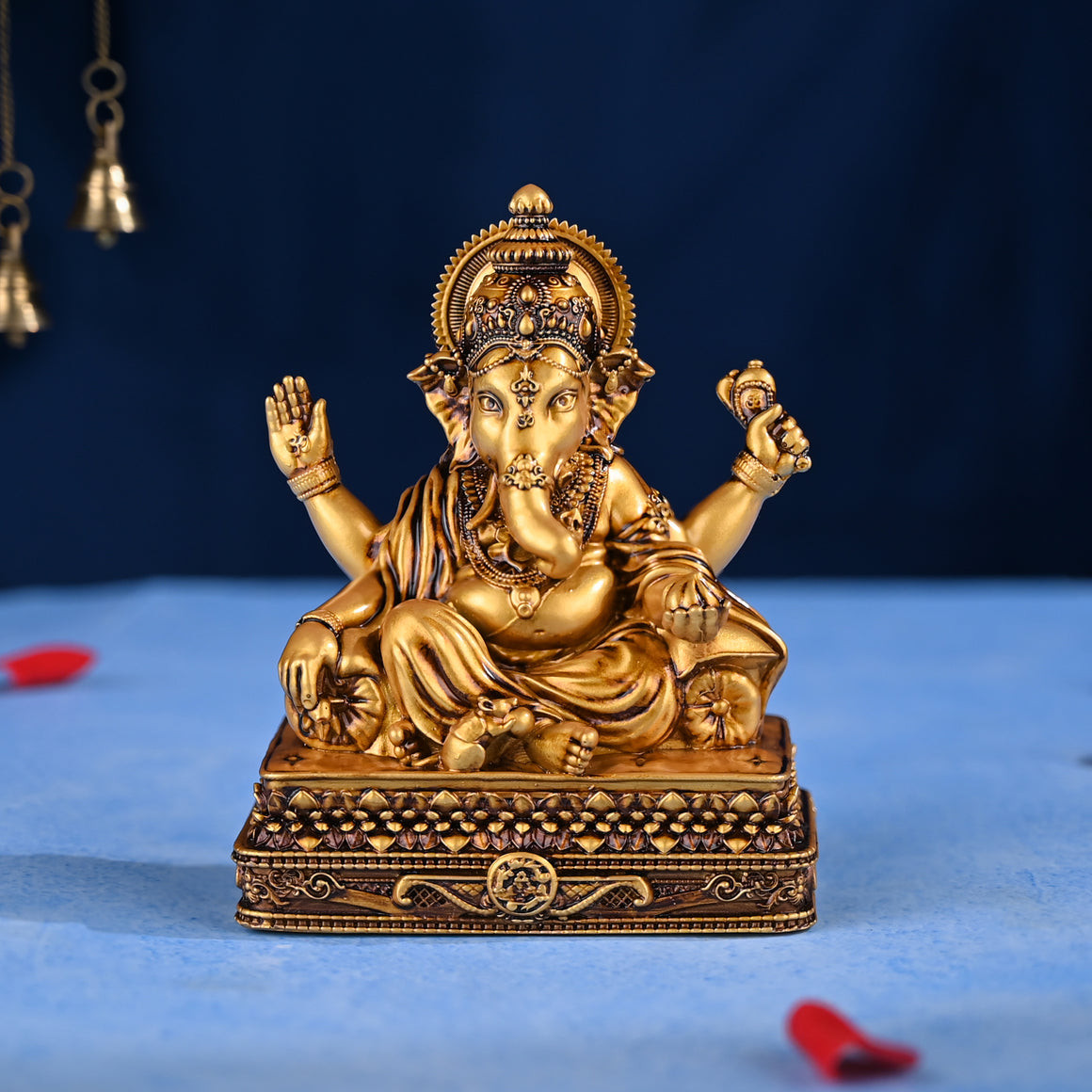In the rich tapestry of Hindu mythology, Lord Shiva reigns supreme as a deity of unparalleled power, embodying destruction, transformation, and regeneration. Revered by countless devotees worldwide, Shiva’s cosmic dance shapes the universe itself. Yet, beyond his formidable persona lies an intricate family narrative filled with fascinating relationships and symbolic depth. This article delves into the divine family of Lord Shiva, exploring the identities of his parents, consort, and children, and their significance within Hinduism.
Who is the Father of Lord Shiva?
 Father of Lord Shiva
Father of Lord Shiva
The question of Lord Shiva’s father is a subject of intrigue and varied interpretations within Hindu scriptures. According to ancient Puranic texts, Lord Brahma, the revered creator of the universe, is often identified as the father of Lord Shiva. Lord Brahma, typically depicted with four heads representing his mastery over the four Vedas, emerged from a lotus that blossomed from the navel of Lord Vishnu. While Brahma holds a crucial position in the Hindu trinity, alongside Vishnu and Shiva, his worship is less prevalent compared to the other two, with fewer temples dedicated solely to him.
However, the narrative surrounding Shiva’s birth diverges from conventional biological origins. Instead, it is believed that Lord Shiva manifested through cosmic forces, a divine emergence rather than a birth in the traditional sense. The concept of Hiranyagarbha, the cosmic egg representing the primordial universe, is often associated with the origin of not only Shiva but also Brahma and Vishnu. This signifies a non-corporeal, cosmic genesis for these supreme deities, emphasizing their eternal and unbound nature.
Who is the Mother of Lord Shiva?
 Mother of Lord Shiva
Mother of Lord Shiva
It may seem surprising, but Goddess Parvati, also known as Shakti, is often considered the mother of Lord Shiva in certain interpretations. This concept arises from the understanding of Parvati’s supreme status in Hindu mythology. Goddess Parvati is not merely Shiva’s consort; she is the embodiment of divine feminine energy, Shakti, and is revered as the supreme goddess herself. She has incarnated in various powerful forms, including Kali, Durga, Bhairavi, and Tara, each representing different facets of her divine power.
One such incarnation of Parvati is Prakriti, the primordial cosmic energy considered the mother of all creation. In this form, Parvati is seen as the universal mother, the source from which all beings and the cosmos itself originate. Therefore, the relationship between Parvati and Shiva transcends the typical husband-wife dynamic and extends to a profound mother-son connection within this specific theological framework. Parvati, in her myriad forms, symbolizes ultimate power, creative force, and nurturing essence, taking avatars across ages to uphold Dharma and protect humankind from evil.
Validating the Divine Origin: Scriptural Evidence
The origin of Lord Shiva finds scriptural support in the Srimad Bhagavad Gita. Chapter 14, verses 3 to 5, elucidates the concept of the three gunas – Raj (Rajgun Brahma), Sat (Satgun Vishnu), and Tam (Tamgun Shankar) – as originating from Prakriti, who is also identified as Goddess Durga. In this context, Prakriti embodies mother nature, the fundamental source of all creation and the entity responsible for bringing forth all living beings.
This scriptural reference reinforces the idea of Goddess Durga or Prakriti, a form of Parvati, as the ultimate origin from which the divine trinity, including Lord Shiva, manifests. It highlights the interconnectedness of these deities and their emergence from a singular, supreme feminine power.
Other Members of Lord Shiva’s Family: Sons Kartikeya and Ganesha
Lord Shiva and Goddess Parvati are revered as the parents of two prominent sons, Kartikeya and Ganesha, each embodying unique attributes and playing significant roles in Hindu mythology.
Kartikeya, also known as Skanda or Murugan, is the valiant god of war and victory. He is iconographically depicted as a youthful warrior, often riding a peacock, symbolizing courage, valor, and the triumph over negativity. Kartikeya is revered as a commander of the divine forces, representing strength and righteous warfare.
Ganesha, on the other hand, is the beloved god of wisdom, prosperity, and the remover of obstacles. Instantly recognizable by his elephant head and large belly, Ganesha embodies abundance, fertility, and intellect. He is also celebrated for his sharp wit and intelligence, often outsmarting even the wisest beings in mythological tales. A popular anecdote illustrates this: when Lord Shiva and Parvati proposed a competition for their sons to circle the world, Kartikeya swiftly set off on his peacock. However, Ganesha circumambulated his parents, declaring them to be his world, thus winning the competition through wisdom and reverence.
[ Vinayaka Idol
Vinayaka Idol
alt: Adorable Vinayaka Idol showcasing Lord Ganesha’s iconic elephant head and potbelly, symbols of wisdom and prosperity, perfect for home worship.]
The Profound Symbolism of Lord Shiva’s Family
Lord Shiva’s family extends beyond a mere mythological narrative; it represents profound symbolism deeply rooted in Hindu philosophy. Lord Brahma, the creator, embodies the cyclical nature of creation, constantly bringing forth new beginnings. Lord Shiva, the destroyer, represents the inevitable force of transformation and change, dismantling the old to pave the way for the new. Goddess Parvati, as the nurturing mother and devoted consort, symbolizes the essential feminine energy that balances and complements Shiva’s masculine power, representing harmony and completeness.
Together, Lord Shiva, Goddess Parvati, and their children encapsulate the core values of Hinduism: love, devotion, and the eternal cycle of creation, preservation, and destruction. Their divine family serves as a constant source of inspiration and guidance for devotees, reminding them of the importance of balance, harmony, and the cyclical nature of life itself.
Takeaway: The Timeless Existence of Lord Shiva
In essence, Lord Shiva transcends the limitations of birth and death, existing beyond the confines of linear time. While scriptures offer glimpses into aspects of his divine play, there are no definitive accounts that establish a concrete beginning or end for Shiva. It is often understood that Lord Shiva is eternally present, pervading the cosmos in various forms. Ultimately, Hinduism emphasizes the significance of faith and belief as the foundation of spiritual understanding. The stories and symbolism surrounding Lord Shiva and his family are meant to inspire devotion and provide a framework for comprehending the profound mysteries of existence.
Frequently Asked Questions (FAQs):
Q1. Who comprises the full family of Lord Shiva?
A. The primary members of Lord Shiva’s family include his consort, Parvati, their two sons, Kartikeya and Ganesha, and his daughter Ashok Sundari (also known as Amba). Some traditions also mention other daughters.
Q2. Who are the five daughters of Lord Shiva mentioned in some traditions?
A. Jaya, Vishhara, Shamliwari, Dev, and Dotli are mentioned as five daughters of Lord Shiva in certain regional traditions. It is believed that worshipping these snake goddesses on the fifth day of Shukla Paksha in the Sawan month offers protection from snake bites.
Q3. What is the significance of Mahadev’s three eyes?
A. Lord Shiva’s three eyes symbolize profound aspects of cosmic reality. His left eye represents the moon (representing emotions), the right eye symbolizes the sun (representing intellect), and his third eye, the fiery eye of wisdom, embodies knowledge and destructive power against negativity.
Q4. Why is Shiva depicted with a snake around his neck?
A. The snake, Vasuki, coiled around Shiva’s neck, represents the cyclical nature of birth, death, and regeneration. Symbolically, the snake also embodies ego, suggesting that ego, when controlled, can become an ornament, just as Shiva adorns the snake.
Q5. Is it auspicious to keep a Lord Shiva murti at home?
A. Yes, keeping a Lord Shiva murti (idol) at home is considered highly auspicious. Regular worship of Lord Shiva is believed to bring peace, prosperity, and spiritual growth to the household.

